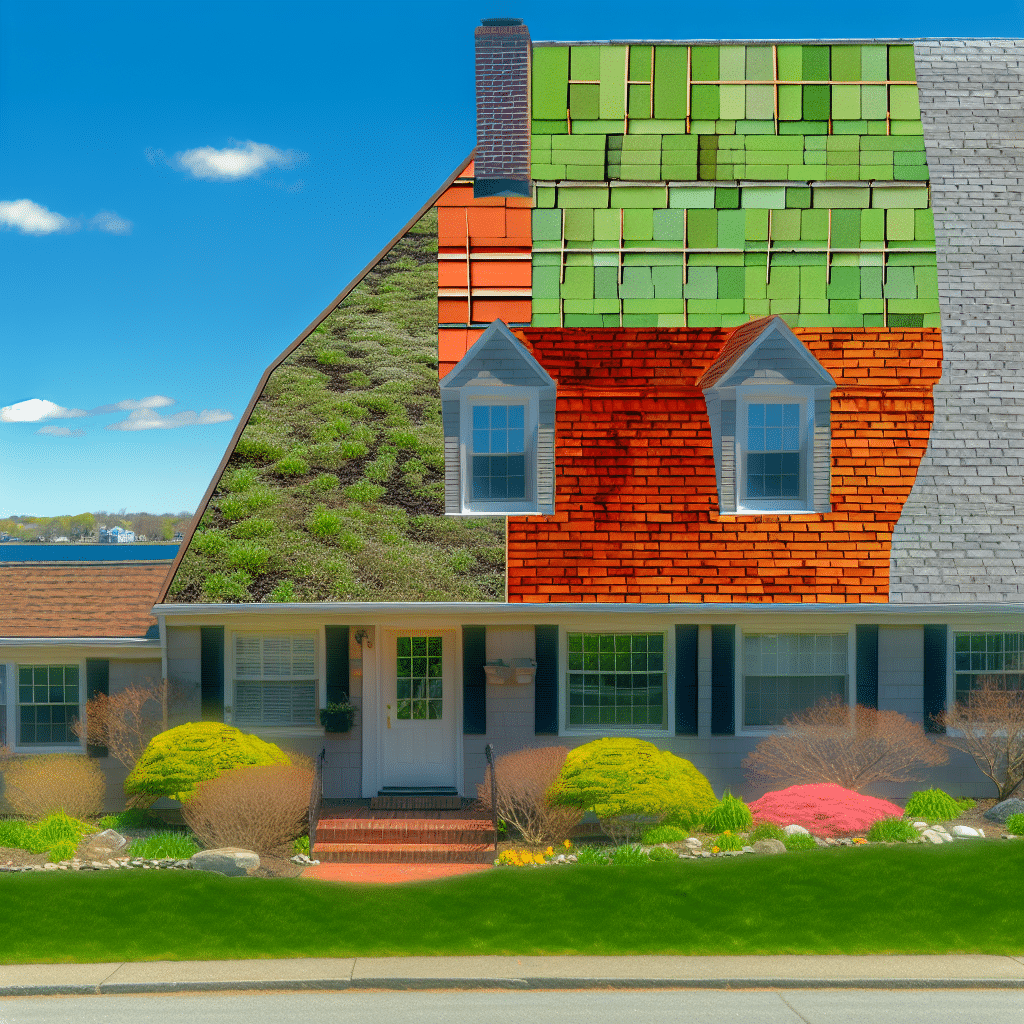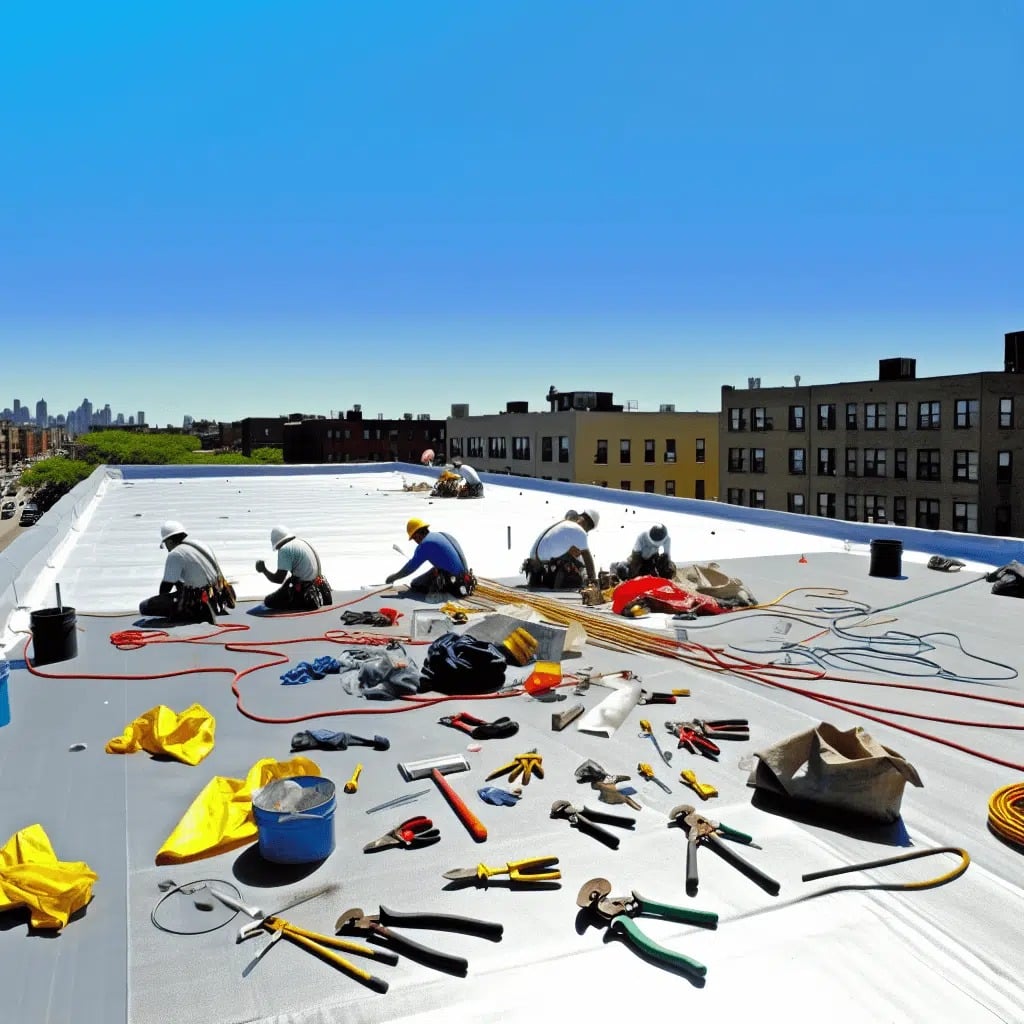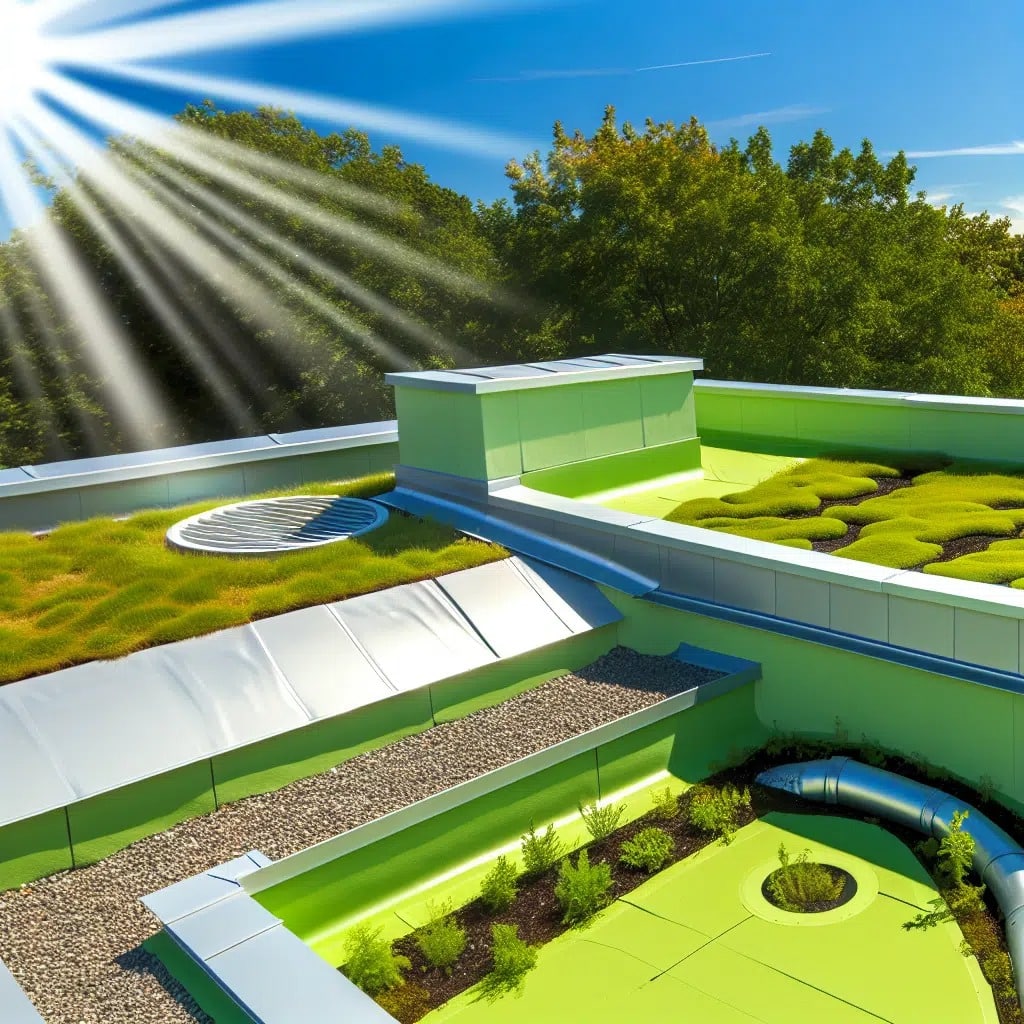The Critical Importance of Selecting the Right Roof Tile Material
Imagine waking up to the sound of dripping water, not from an open faucet but from a leak that has found its way through your ceiling. This kind of nightmare scenario is a real possibility if the roof tile material atop your house fails to protect your home. The urgency to select the proper roofing material goes beyond aesthetics; it’s about safeguarding your family’s comfort and security. Choosing a superior roof tile material is paramount for any homeowner, as the right choice can prevent expensive damage and provide peace of mind during harsh weather. A timely decision fortified with reliable information marks the first step towards a resilient, weatherproof roof.
While the initial cost of roofing might cause some to opt for the cheapest option, this approach can be more costly in the long run. A quality roof made from top-notch materials like concrete can last for decades, resisting wind, rain, and sun without faltering. Investing in the right roof tile material can mean the difference between a quick patch-up job every few years and a solid, once-in-a-lifetime investment. As we move deeper into the unpredictable patterns of spring weather, understanding the intrinsic value of a durable roof is not just wise, but imperative. Roof tiles must deliver not just on durability, but also on energy efficiency and ecological sustainability—factors we’ll delve into throughout our discussion.
With options ranging from traditional clay to innovative, eco-friendly solutions, the selection process can be overwhelming. Therefore, it is crucial to filter out the noise and focus on roof tile materials that meet specific criteria—chiefly, longevity, and environmental impact. Imagine opting for a lightweight yet sturdy option that stands up against Cranston’s variable climate, offering both hail resistance and temperature adaptation. These modern solutions give homeowners a chance to future-proof their property while contributing positively to the environment. In the following sections, we’ll examine the nuances of these materials and how they can protect your home for years to come, ensuring you make an informed, confident decision for your rooftop.
Exploring the Diverse Range of Roof Tile Options
When delving into the world of roofing, you’re greeted with a plethora of choices, each with distinct benefits and considerations. Clay and concrete tiles reign as perennial favorites, celebrated for their classic appeal and sturdy composition, but innovation in roofing materials has expanded the horizon immensely. Metal tiles, for example, are gaining traction for their longevity and sleek aesthetic, whereas rubber composite tiles impress with their resilience and eco-friendly nature. Wooden shakes offer a time-honored rustic charm, but they require more maintenance and can be susceptible to weather damage. Each material brings a unique set of attributes to the table, and homeowners must weigh these characteristics carefully to select the best fit for their homes.
The shift towards green building practices has brought about a surge in demand for environmentally sustainable roofing solutions. Green roof systems are not only visually stunning, but they also contribute positively to the environment by improving insulation and supporting biodiversity. Embracing such innovative options can reduce your carbon footprint and may even lead to energy savings. If you’re intrigued by eco-friendly alternatives, consider exploring Rhode Island’s green roof systems and learn how they can seamlessly integrate with your aesthetic and functional aspirations. Integrating environmentally conscious choices into your roof not only protects your home but also sets a standard for responsible living.
Understanding Longevity and Maintenance Requirements
Selecting the right roof tile material is just half the battle; understanding the maintenance requirements of each option is equally critical. Regular inspections play a key role in extending the lifespan of your roof, regardless of the material chosen. For instance, while clay tiles can last upwards of 50 years, their longevity hinges on consistent upkeep and prompt repair of any damage. Conversely, metal tiles might require less maintenance but should still be inspected routinely to ensure their integrity against potential rust or denting. It’s also wise to consider local factors like Cranston’s climate, which can impact the frequency of required inspections—severe weather demands more frequent roof care to head off any potential issues.
Final Thoughts on Selecting Your Ideal Roof Tile Material
As we round up our journey through the world of roof tile materials, it’s evident that making the right choice transcends mere preference. It involves a balance of aesthetics, functionality, and forward-thinking. A considered decision can lead to not only a beautiful home exterior but also a structure capable of withstanding the vicissitudes of time and nature. In Cranston, where April can bring a mix of spring zephyrs and unexpected squalls, the resilience of your roof is put to the test. Remember, your roof is a critical component of your home’s defense system, so choose a material that promises to stand firm against the elements.
Investing in a material that caters to energy efficiency will bear fruit in the long run, significantly reducing heating and cooling costs. A sun-reflective tile can make a noticeable difference in your energy bills, particularly during the warm seasons when air conditioning is a must. Insulation properties also play a big part in material selection; proper insulation can keep your home temperate and comfortable year-round. In climates like Rhode Island’s, where temperatures swing from the heat of summer to the chill of winter, material choices that contribute to effective insulation are integral for comfort and cost savings. It’s these thoughtful considerations that lead to a wise, economically sound decision in roof tile selection.
In conclusion, while the choice of roof tiles comes with its complexities, it need not be an overwhelming endeavor. Whether you’re interested in traditional options or innovative, green selections, the available range is sure to offer a solution that aligns with your needs and values. If you’re looking for more personalized guidance or wish to see how these materials come together in real-life applications, feel free to visit our Rhode Island residential roofing page. There you’ll find expert advice tailored to your specific circumstances—a conversation with an informed specialist is just a click away. Your home is a cherished space; protect it with a choice that ensures safety, economy, and tranquility for the years to come.
Insights From The Experts: Roof Tile Mastery
Tip 1:
To ensure longevity, conduct regular inspections of your roof tiles and address any damage promptly. This can prevent minor issues from escalating into costly repairs.
Tip 2:
When considering roofing materials, factor in not only the initial cost but also the long-term savings. Durable materials like slate or concrete may offer better value over time due to their extended lifespan.
Tip 3:
For those looking to make eco-friendly choices, opt for roof tiles made from recycled materials or those that are recyclable, such as certain metal tiles, which can lower your carbon footprint.
Tip 4:
In areas prone to severe weather, choose roof tile materials rated for high wind resistance and impact from hail. Proper installation and sealing are crucial for maximizing this protection.
Tip 5:
To improve home energy efficiency, select roof tile colors and materials that reflect sunlight and provide better insulation. This can significantly reduce cooling costs in warmer climates.
Expert Answers to Your Roofing Queries
How often should roof tiles be replaced or inspected for maintenance?
It’s recommended to inspect roof tiles at least once a year and after any severe weather event. Replacement depends on the material but can range between 20-50 years with proper upkeep.
What are the cost-saving benefits of using durable roof tile materials?
Durable roof tile materials often translate to fewer repairs and replacements over time, allowing for significant savings on potential future expenditures related to roofing.
Are there environmentally friendly roof tile options?
Yes, there are eco-friendly options such as recycled plastic, metal, or rubber tiles that offer improved insulation and are both durable and sustainable.
Can roof tile materials withstand extreme weather conditions?
Quality materials like high-rated clay, concrete, and slate tiles are designed to endure extreme weather, including high winds, hail, and drastic temperature changes.
How does the choice of roof tile material affect home energy efficiency?
Reflective or light-colored tiles can deflect sunlight, thereby reducing heat absorption and keeping homes cooler, leading to lower energy costs in warmer climates.



